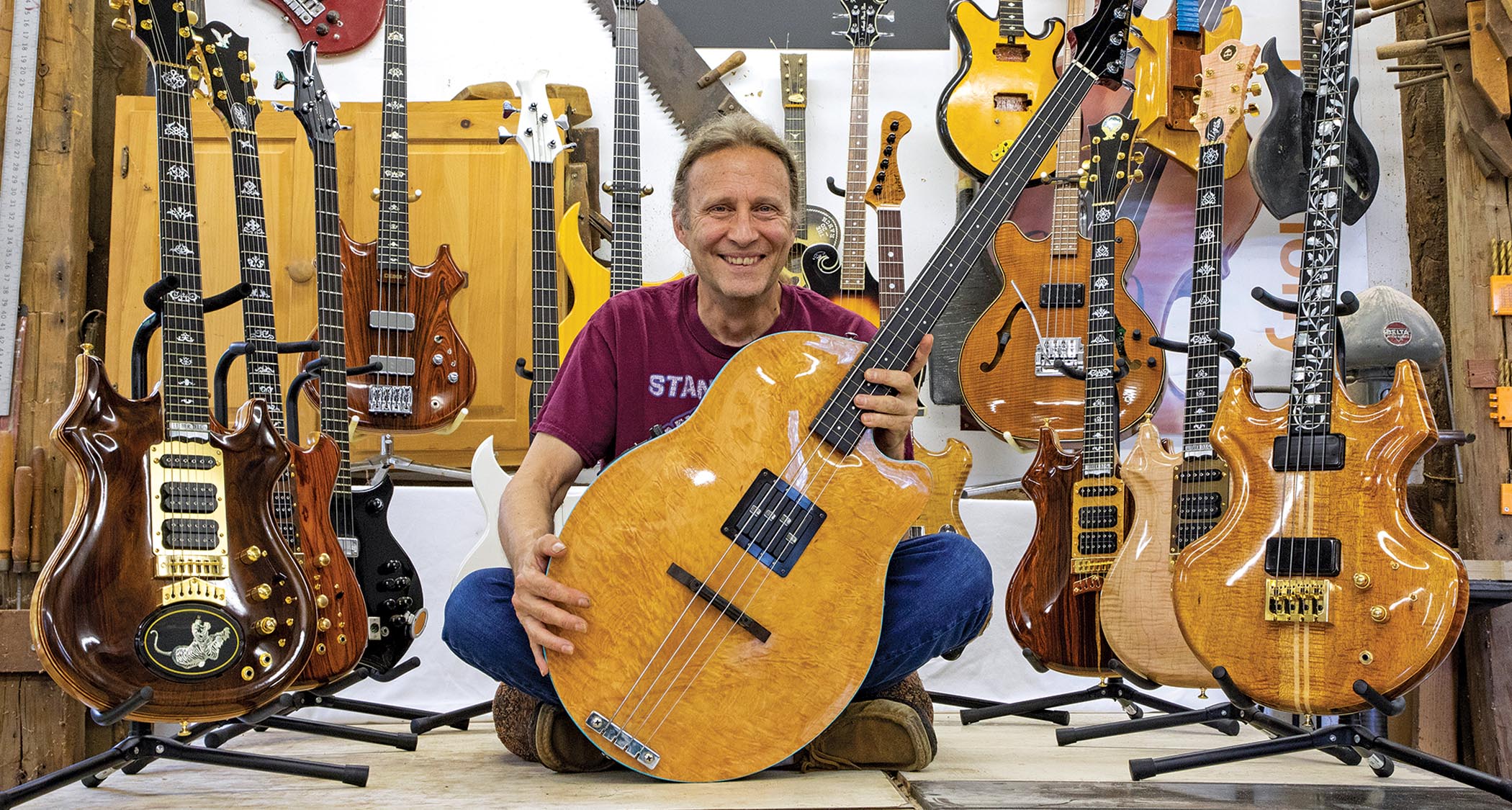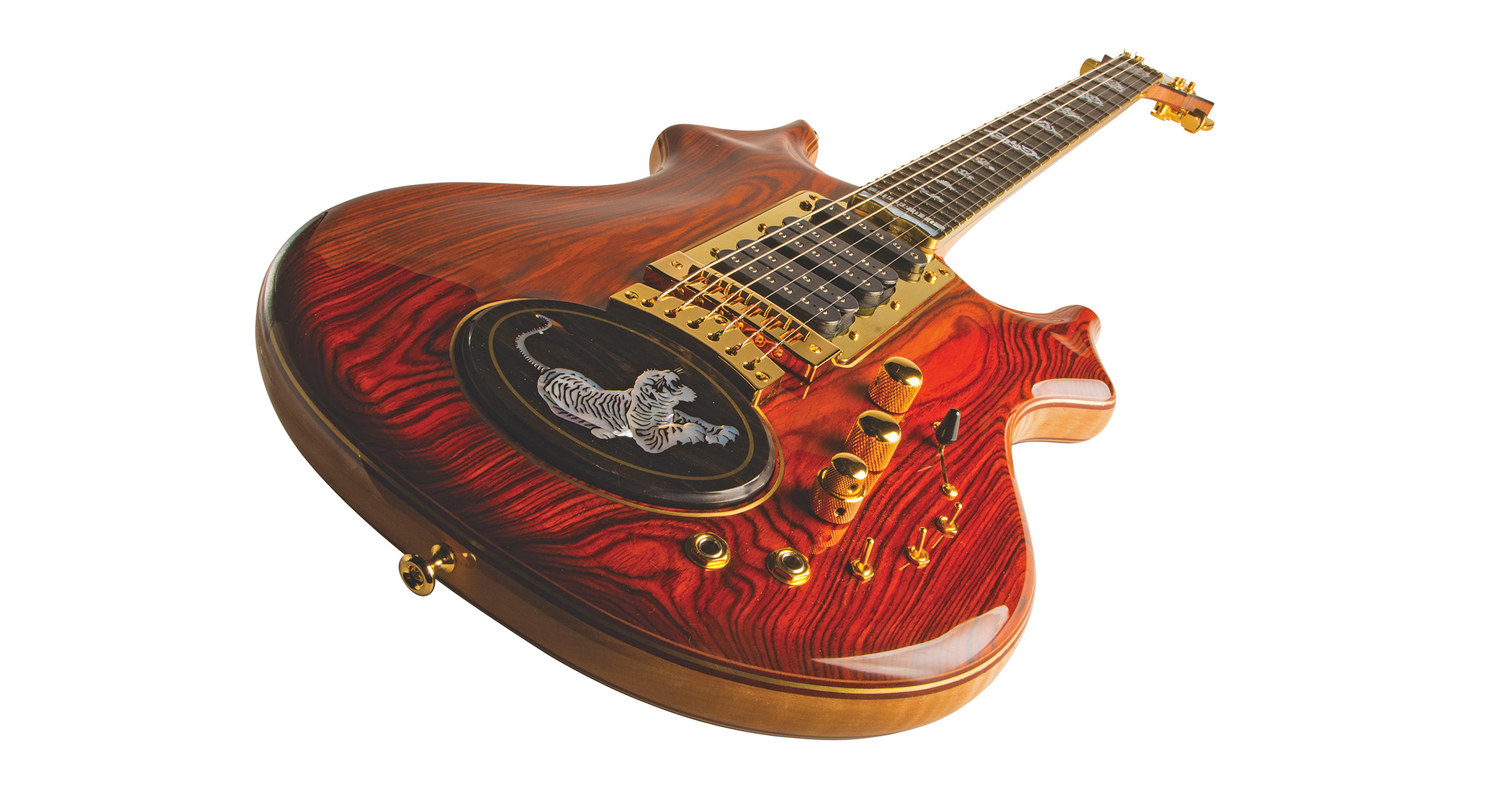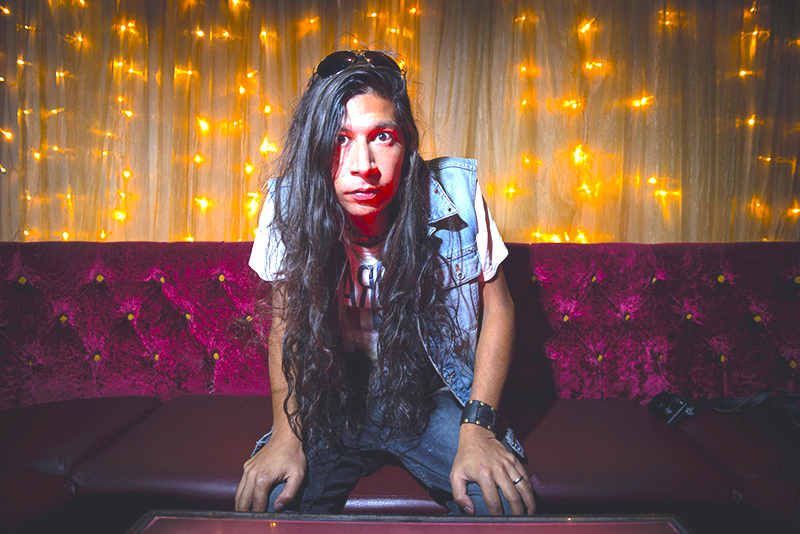"I don’t care what anyone says, what Paul Reed Smith builds today is what Doug and I made back then”: From the Tiger to the Wolf, meet the guitar maker who bought Jerry Garcia’s wildest designs to life
This is the story of Tom Lieber, the aspiring guitar builder who wouldn’t take no for an answer and ended up making prized instruments for the Grateful Dead

Every gear company will have a pedigree of talent that it’s most associated with, though in the case of Lieber Guitars, it really just boils down to one group above all others – American rock ’n’ roll originals the Grateful Dead.
Master luthier and owner Tom Lieber got his big break designing and building guitars for the band alongside Doug Irwin, resulting in Jerry Garcia models like the Wolf and the Tiger.
Since then, his instruments have been seen in the hands of Paul McCartney, Victor Wooten, Blondie’s Chris Stein and many, many more.
At the turn of the millennium, Lieber was approached to build a Tiger six-string for a client and eventually decided to revisit his past as a full-time pursuit – producing top-of-the-line, custom-made instruments for all the Deadheads (and every other kind of head) out there.
He now oversees a whole range of Garcia favorites, from limited-edition models to the Coco series, as well as other guitars connected to giants like Stanley Clarke, John Entwistle and Pete Sears. Below, the legendary builder looks back on an impressive legacy and gives us a look into the business he’s running today.

How did you first get into guitar building?
I found Doug working out of a small chicken shack and convinced him to take me on. He needed nobody; Jerry was his only customer... I basically forced myself upon him
“It helps to be a player first. That was the driving force for me to find a more refined tool in my hands. Around 1970, Alembic Inc. started a revolution with Jack Casady’s $4,000 bass. I was into what [Alembic co-founder] Rick Turner was talking about, but I couldn’t afford one. The only way to get one was to build it myself.
Get The Pick Newsletter
All the latest guitar news, interviews, lessons, reviews, deals and more, direct to your inbox!
“I moved to California to find an apprenticeship and went to Alembic with some instruments I’d been modding, but they told me there was no room at the inn. I ended up getting put in touch with Doug Irwin, who worked for Jerry Garcia.
“I found Doug working out of a small chicken shack and convinced him to take me on. He needed nobody; Jerry was his only customer. I told him, ‘Dude, I’ve come a long way to learn. I’m going nowhere!’ I basically forced myself upon him.”

What are the most important things to remember about making these instruments?
“You have to roll up your sleeves and get your hands dirty. Everyone always says it must be nice building guitars, and I tell them, ‘Yeah, but the knowledge you need is broad; it goes well beyond what you think!’ I never expected I’d have to be a machinist and know how to take everything apart, repair whatever went wrong and then put it all back together. If you can’t do that, you’ll never be a boutique builder.”
Which of the Grateful Dead models did you end up making first?
“I began with the Pendulous bass, which was one of three models Doug and I did back in 1975. What became the Tiger was the ‘Garcia.’ And there was the Firedrake, which was a combination of the Pendulous and the Tiger.”
What was Jerry Garcia looking for?
As much as players say they want the Holy Grail, they usually want what they already have
“Jerry’s guitars were always a working platform. He liked to try different stuff, which was great for us. Not all of it worked. As a builder, your ego can get in the way if you’re not paying attention. For the player, the guitar should be comfortable like an old pair of shoes. There should be nothing foreign about it.
“As much as players say they want the Holy Grail, they usually want what they already have. Alembic were building all sorts of guitars for the Dead, who owned a portion of the company at one point. Bless Rick Turner, but he couldn’t get Jerry to play his guitars.
“On his own time, Doug got to use the Alembic shop to build. He made the Eagle, but he couldn’t afford to put the Alembic electronics, so he threw in some passive stuff. Jerry picked it up and loved it.”

And the rest was history?
“Pretty much. Jerry then contracted Doug to build the Wolf. At the time, Jerry was playing a modified Strat called the Alligator. Doug decided to make something similar. In a genius way, Jerry ended up thinking Doug was the greatest builder on the planet because he did the one thing Alembic refused to do.
“He’d been given loads of great guitars; he just didn’t know because he never liked the electronics. With those Fender pickups inside, Jerry was happy. That’s what sold him to Doug. It was just a case of paying attention.
“There was Gibson spacing for the strings at the bridge and nut, but with the Fender scale. It was one of the first long-scale Gibsons. I don’t care what anyone says, what Paul Reed Smith builds today is what Doug and I made back then.”
Your guitars were quite experimental for the time, featuring exotic woods and brass lines.
A lot of the exotic woods came from Doug’s time at Alembic. We were using purpleheart and padauk, plus other woods you probably shouldn’t use
“Nobody was doing that kind of stuff. A lot of the exotic woods came from Doug’s time at Alembic. We were using purpleheart and padauk, plus other woods you probably shouldn’t use.
“We were always experimenting. We got the Wolf back for repair and had no idea what to do next. There was a Travis Bean [guitar] on the bench. Nobody was happy because Jerry had been playing that instead.
“I inspected the thing and noticed it weighed a lot. So we decided to stop worrying about weight and put together a hardwood laminate design. That’s how the Tiger came to be. Doug’s vision was a laminate sandwich with the brass going around the side. The only thing I had to do was bleed out the woods before assembly. The design and shape of the guitar was also mine. It took off – 40 years later!”
So which guitar is your best seller?
I’ve only ever made one Gigerstein and don’t plan to do any more, but it was amazing to work with H.R. Giger
“Last year I sold more Garcias, which are high-end. Before that, I was selling one a year and then tons of the Coco models. The Spellcaster basses were going out the door for a while. For me, the Garcia stuff sells more than other stuff like the Butternut guitar. I’ve only ever made one Gigerstein and don’t plan to do any more, but it was amazing to work with [Swiss artist] H.R. Giger.”
What makes your guitars different from everything else out there?
“Lots of people build, but not many of them instill themselves into everything they make. With my creations, I can promise you that’s what happens. A piece of me goes into every guitar. I haven’t built a single guitar where I didn’t shed a drop of blood. I will cut myself or get a splinter or prick my finger at some point.
“I only make one of each guitar. There were 53 Spellbinder basses from 1980, and I did 24 Garcias for the Grateful Dead’s 50th [anniversary] – 12 Tigers and 12 Wolf models, all made out of sustainable materials. Other than that, it’s always one of everything. The way I look at it, there are other people doing replicas of this stuff. Mine are all originals.”
- See Lieber Guitars for more details of these incredible guitars.
- This article first appeared in Guitar World. Subscribe and save.
Amit has been writing for titles like Total Guitar, MusicRadar and Guitar World for over a decade and counts Richie Kotzen, Guthrie Govan and Jeff Beck among his primary influences as a guitar player. He's worked for magazines like Kerrang!, Metal Hammer, Classic Rock, Prog, Record Collector, Planet Rock, Rhythm and Bass Player, as well as newspapers like Metro and The Independent, interviewing everyone from Ozzy Osbourne and Lemmy to Slash and Jimmy Page, and once even traded solos with a member of Slayer on a track released internationally. As a session guitarist, he's played alongside members of Judas Priest and Uriah Heep in London ensemble Metalworks, as well as handled lead guitars for legends like Glen Matlock (Sex Pistols, The Faces) and Stu Hamm (Steve Vai, Joe Satriani, G3).
You must confirm your public display name before commenting
Please logout and then login again, you will then be prompted to enter your display name.


![A black-and-white portrait of Deafheaven's Shiv Mehra [left] and Kerry McCoy playing guitar in close-up.](https://cdn.mos.cms.futurecdn.net/g7ES9cMBnW4L769Nr2W5q7.jpg)